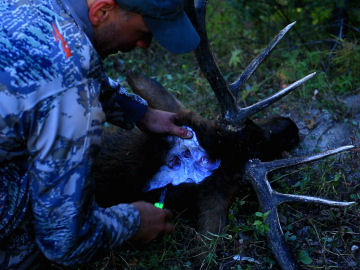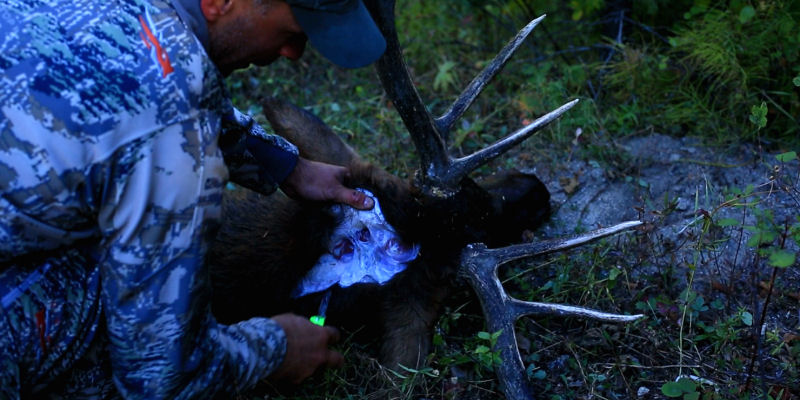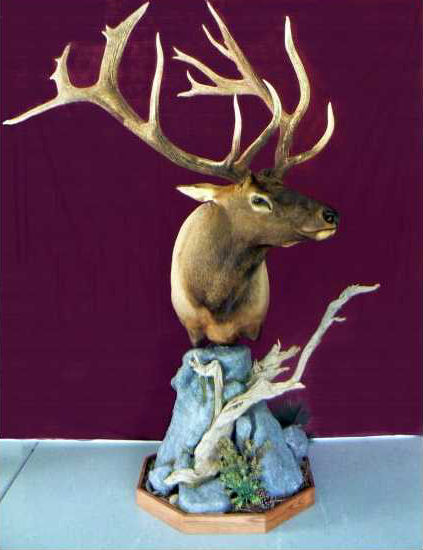Preparing Your Trophy for Taxidermy


Paying respect to the animals we harvest goes far beyond enjoying the table fare it provides. For me, displaying antlers, horns, hides, and skulls is just as important as the meat we eat. Utilizing as much of the animal as possible is the greatest homage you can pay that animal. Personally, I prefer to decorate my home with taxidermy art to preserve the memories of the hunt for a life time.
 On my first ever elk hunt, I was very fortunate to call in and arrow a 5×5 bull. I had trained for months leading into this hunt – climbing with heavy packs, lifting, and running. Additionally, my arrows pounded the targets day after day, and I wore out diaphragm call after diaphragm call hoping to learn to call in an animal that I had always dreamed of bowhunting. What I hadn’t prepared for was the size of a bull elk and how to care for the cape and hide. Being by myself, I’ll never forget that overwhelming feeling. I was from a small town in Michigan, and whitetail deer were the largest animal I had taken at the time. Fortunately, my trapping and skinning experience helped me fumble my way through getting the meat, cape, and hide off the mountain all in good condition.
On my first ever elk hunt, I was very fortunate to call in and arrow a 5×5 bull. I had trained for months leading into this hunt – climbing with heavy packs, lifting, and running. Additionally, my arrows pounded the targets day after day, and I wore out diaphragm call after diaphragm call hoping to learn to call in an animal that I had always dreamed of bowhunting. What I hadn’t prepared for was the size of a bull elk and how to care for the cape and hide. Being by myself, I’ll never forget that overwhelming feeling. I was from a small town in Michigan, and whitetail deer were the largest animal I had taken at the time. Fortunately, my trapping and skinning experience helped me fumble my way through getting the meat, cape, and hide off the mountain all in good condition.
Here are some ideas to help you avoid that overwhelming feeling I had 27 years ago! Shortly after returning home from that trip, I took the time to learn from a local taxidermist how to properly care for and handle capes, as well as turn the lips, noses, and ears in preparation for taxidermy. In exchange for the education I received, I skinned, caped, and prepared hides under his supervision until I felt confident that I knew what I was doing. If there is a local taxidermist, take the time to visit with him or her and see if they could teach you how to properly cape and care for an animal in the field. They will get some free help skinning, fleshing, and salting hides, while you get an invaluable education in preparing your cape for taxidermy.
If you don’t have a taxidermist in your immediate area, hunting conventions are excellent venues to meet extremely talented taxidermists and see some incredible pieces of art. It’s worth your time to search them out. One of the most talented young taxidermist “artists” I have met is Joe Sweifel of Wild Life Revolutions here in Reno, Nevada. Joe does absolutely incredible creative works of art and has an excellent Trophy Field Care Guide that can be found on his website. Click here to view the Trophy Field Care Guide.
Here are a few things to keep in mind to ensure your hides and capes are in the best possible condition for the taxidermist:
- Generally speaking, most taxidermists would prefer to have the animals properly skinned and frozen when they come through the door.
- Handling hides and capes requires as much care as handling the meat. Keep them cool, clean, and dry. Always leave extra hide for the taxidermist to work with – it makes their lives much easier and your mounts much nicer.
- Keep hides and capes rolled up in game bags with the hair out so blow flies cannot reach them.
- Even in extremely warm conditions, proper care can be achieved simply by moving the hide and capes to a shady area with a slight breeze.
- Again, I highly recommend taking the time to learn from a knowledgeable taxidermist how to properly skin and flesh hides and capes. Learning to turn and salt the ears, nose, and lips would be a huge asset, but only – I repeat ONLY – if done correctly.
Hopefully the meat in our freezers comes and goes on an annual basis, but preserving our hunting memories with beautifully displayed, antlers, horns, hides, rugs, mounts and skulls will adorn your home for a lifetime.
